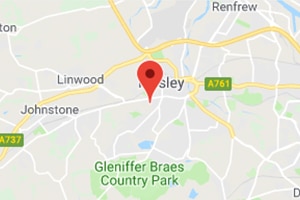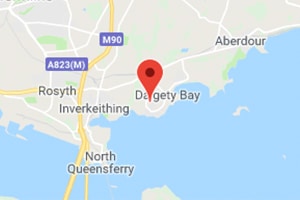You don’t always need to hire a plumber to bleed a radiator. Sometimes, it is something that you can do yourself with the correct know-how. Safe bleeding lets you reduce your energy bills and improve the efficiency of your heating system.

How To Bleed a Radiator: 11 Step Guide
Usually, the signs that you need to bleed your radiator are obvious such as a cold radiator or gurgling noises. The top section (furthest from the inlet pipe) feels cold to the touch, while the bottom feels warm around fifteen minutes after turning on your heating. This happens when a pocket of air becomes trapped at the top, creating an insulating barrier that prevents the warm water from transferring heat energy to the surrounding metal.
Fortunately, letting air out of a radiator is a simple task and, often, a five-minute job, once you know how. Once you’ve done it, you will save energy and start benefiting from increased heat circulation through your home, less wasted energy, and lower heating bills.
Check out the simple steps to get rid of cold sections on your radiator and get the toasty-warm interiors you crave.
Step 1: Turn Your Heating To Full Temperature

First, switch on your heating, turn your radiators to full and wait several minutes. The heat will help to push any unwanted pressure out of the system and allow you to check the temperature distribution across the radiator.
Most radiators have a control dial on the upper left. Twist this around so that the highest number (or setting) corresponds with the indicator marker (usually a small arrow).
Step 2: Touch Your Radiators To Detect Differences In Temperature
After your radiators are warm, put on a pair of moderately insulating gloves and walk around your home, touching them all over. (If your gloves are too thick, you won’t be able to detect temperature variation).
If you only have a small amount of air in your radiators, units will feel warm in most places. If you have a large amount, the top fifty per cent or more will remain cool to the touch (compared to the bottom, closest to the inlet pipe).
Sometimes, you’ll notice you have air pockets in multiple radiators on all floors in your home. If so, make a note of all these locations. Usually, it is best to bleed the downstairs radiators and furthest from the boiler first, before moving onto those that are closer or upstairs.
You may find that some radiators are completely cold to the touch even an hour after turning on the heating. Cases like this typically indicate that the unit is full of air.
Step 3: Turn Off Your Heating
Return to your thermostat and switch off your heating before attempting to bleed your radiator. Some systems rely on pumps that will suck in additional air if you leave the system open while running.
Step 4: Let Your Radiators Cool
Don’t attempt to bleed your radiators if they still feel warm to the touch. Doing so can lead to boiling water shooting when you open the valve, potentially burning your hands and damaging your flooring.
You should also wait for your radiators to cool to allow the water inside to settle. The less turbulence you have in the system, the easier it will be to extract the air and let your radiators work more efficiently.
Step 5: Determine Which Radiators You Intend To Bleed First
If there is only one radiator in your home that isn’t functioning correctly, you can go ahead and skip this step.
If you have issues with multiple radiators, create a list showing the order in which you will bleed them. As discussed, start with the one furthest from the boiler on the ground floor, and work your way back.
Step 6: Collect Your Supplies
Bleeding radiators can sometimes be a messy job. For that reason, you’ll want to carry some supplies with you as you work your way around your house to protect you and your property.
You’ll need an old towel for the floor area around the radiator to absorb any overflow, plus a handheld cloth to mop up any drips or spray.
You’ll also want an appropriate radiator bleed key. Radiator keys aren’t entirely generic, and usually, the manufacturer supplies them with the radiator. If you can’t find yours, check the model of the heater or the design of the valve attachment and find a compatible radiator key at your local diy shop or hardware store.
Some more recent radiators use a flathead screwdriver attachment to control the flow within the unit. If that’s the case, you also need to carry this with you.
If you need to buy a radiator key you can easily order them online here.
Step 7: Bleed The Valve
Take your radiator bleed key and insert it into the bleed valve – usually located on the opposite side of the radiator from the water control valve.
Most bleed valves look like a small, circular piece of metal with a square hole in the middle for the bleed key. As you insert the key, you should feel that they have locked together.
The next step is to turn the key anti-clockwise to release the bleed screw. Please do this slowly. As you turn the key, you should start to hear a hissing sound as all the excess air begins to escape. Even if you turned your central heating off a while ago, the air could be hot, so wear gloves and keep your face away from the valve mechanism.
How To Bleed A Radiator Without A Key
Some modern radiators don’t have traditional radiator valves. In this case, place the blade of your flathead screwdriver in the groove. Then rotate slowly anti-clockwise a quarter until you hear air hissing out.
Never fully release a bleed valve. Pressure in the system will force excess water out all over your floors.
Step 8: Continue Bleeding Until The Hissing Stops
Once the valve is open, continue listening to the hissing and wait for it to stop. Pressure in the system will automatically force out any unwanted air.
Once most of the air has come out, the valve will start to trickle water. (Water tends to spurt out in a jet from flathead valves).
Usually, the hissing sound lasts between twenty and thirty seconds, but it all depends on the amount of air in the system and the diameter of the aperture through which the air escapes.
Step 9: Retighten The Valve
Once you notice water dribbling out, the bleed is complete, and you’re ready to retighten the valve. Using a bleed key or flathead screwdriver, turn the valve clockwise until you start feeling resistance.
Avoid tightening the valve too much. Overtightening could damage the threads or the valve hardware itself, and make it more challenging to bleed your radiators in the future.
Step 10: Wipe Down Any Spilled Water
Water will sometimes spill out as you bleed as your radiator. Try to wipe it down as much as you can to prevent any spillage from rusting your pipes or radiator body.
Once you’ve completed step 10 for the radiator furthest from your boiler downstairs, move onto the next and repeat the bleed procedure. If you have different radiators in your house, you may have to learn how to bleed an old radiator or how to bleed a towel rail In general, the principles are the same.
Step 11: Check Your Heating
After you’ve bled all your radiators, it’s time to check your central heating to ensure that everything works as it should.
Once the heating has been up and running for ten minutes or so, repeat step 2 and check the temperature of all of the radiators in your home. This time around, they should be hot all over. If you notice cold patches, it suggests that your bleed wasn’t successful and there is more air in the system. In which case, you’ll need to wait for the heating to cool down and try again.
Bleeding radiators can lead to significant changes in boiler pressure. Removing air from radiators can reduce the pressure in the system, which sometimes means that hot water can’t reach all the radiators in your house. Ideally, you want your heating pressure gauge to display between 12 and 15 PSI.
Fortunately, you can top up the pressure your boiler generates using the filling loop. Look for something that looks like a tap or level connected to the mains water supply. Open this and then close it once you reach the desired PSI.
Frequently Asked Questions
Which radiator should I bleed first?
Always bleed the radiator furthest from the boiler on the ground floor first. Then move onto radiators closer to the boiler on the ground floor before moving upstairs.
Can you bleed a radiator when the heating is on?
You shouldn’t bleed a radiator with the heating on. Before attempting any bleed, turn off your heating and wait for the entire radiator water to cool down.
How to Bleed a Radiator Without A Bleed Valve?
All modern manufactured radiators should have a radiator valve somewhere. If yours doesn’t, or you can’t find it, you’ll need to hire a plumber to either install one (unlikely) or locate it for you.
Radiator cold at the bottom?
This could be an indication of sludge in the system. Read our guide here or call a Gas Safe heating engineer.
We hope this guide has helped you with your heating. If you’re interested in pursuing a career as a heating engineer, you can find out further information here. We also have a range of plumbing courses aimed at both experienced engineers and new entrants.

